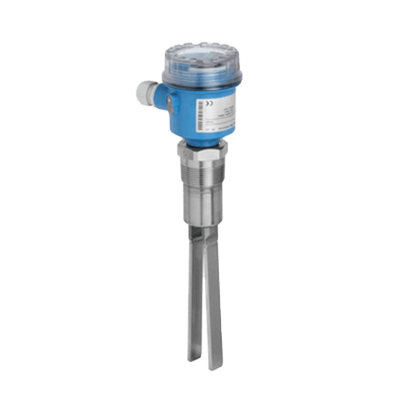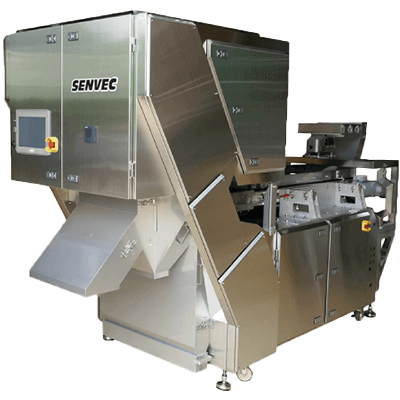¿Qué son los Sistemas de Inspección de Superficies?
Los equipos de inspección de superficies son empleados en las líneas de producción de fábricas con el propósito de examinar productos.
Su función principal radica en identificar productos defectuosos y detectar piezas con imperfecciones.
Usos de los Sistemas de Inspección de Superficies
Los sistemas de inspección de superficies se utilizan para la inspección de productos en diversos campos. Por ejemplo, se utilizan para inspeccionar productos que se fabrican en serie, como películas, vidrio y láminas de metal.
Los sistemas de inspección de superficies pueden utilizarse para evitar el envío de productos defectuosos mediante la detección de defectos en los productos a partir de los datos de imagen obtenidos al tomar una imagen de la superficie de cada producto. Sin embargo, los elementos que deben inspeccionar los sistemas de inspección de superficies varían de un producto a otro.
Para los productos en los que la suavidad es importante, como las películas y el vidrio, se detectan las irregularidades, mientras que para las chapas metálicas, se detectan los arañazos finos.
Principio de los Sistemas de Inspección de Superficies
Los sistemas de inspección de superficies detectan los defectos basándose en los datos de imagen obtenidos a través de una cámara. Por lo tanto, un equipo de inspección de superficies consta de una unidad de inspección que comprende un receptor de luz y un proyector de luz, y una unidad de control para el procesamiento de imágenes, que incluye un ordenador. En la sección de inspección se suele utilizar una cámara CCD como receptor de luz.
El proyector se refiere a la fuente de luz, y se utilizan lámparas fluorescentes, LED y lámparas halógenas en función de la aplicación. La luz emitida por la fuente luminosa, el reflector, se refleja o transmite sobre la superficie del objeto a inspeccionar, y es captada por la cámara CCD en la parte receptora de luz y convertida en una señal eléctrica.
Las señales de la cámara CCD se procesan en la unidad de control y los defectos pueden detectarse y determinarse a partir de los datos de la imagen. El método utilizado para detectar defectos en los datos de imagen consiste en comparar los datos obtenidos con los de un producto sin anomalías, y juzgar un defecto como tal si se detecta un cambio que supere un valor umbral. Por ejemplo, los sistemas de inspección de superficies para papel soporte de impresión utilizan convencionalmente formas de onda analógicas en lugar de datos de imagen.
Con este método, los defectos finos podrían no ser detectados dependiendo del ajuste del umbral, o un tono de fondo podría ser juzgado erróneamente como un defecto. El uso de datos de imagen resuelve estos problemas, ya que se puede realizar un juicio detallado en función del tamaño del píxel.
Más Información sobre los Sistemas de Inspección de Superficies
1. Diseño Óptico de los Sistemas de Inspección de Superficies
En los sistemas de inspección de superficies, la luz se emite desde una fuente luminosa, el proyector, y se refleja o transmite sobre la superficie a inspeccionar. Existen cinco tipos de reflexión y transmisión: “reflexión directa”, “reflexión difusa”, “transmisión directa”, “transmisión difusa” y “transmisión por dispersión”.
Como cada método tiene características diferentes, es importante seleccionar el método en función de si se desea detectar “defectos” o “irregularidades” en la inspección de superficies.
2. Cámaras y Proyectores en los Sistemas de Inspección de Superficies
La precisión de la cámara de la unidad de inspección es un factor muy importante en los sistemas de inspección de superficies. Es importante tener en cuenta que si la cámara no funciona correctamente de acuerdo con su precisión, cualquier zona anormal pasará desapercibida.
El rendimiento del proyector que hace brillar la luz sobre el objeto que se va a inspeccionar también tiene un efecto significativo en el rendimiento de imagen de la cámara. Para garantizar que la luz incida uniformemente sobre la superficie del objeto de inspección, es decir, sobre la superficie de inspección, se utiliza una fuente de luz como, por ejemplo, una barra de luz con un difusor como proyector que incida uniformemente sobre una amplia superficie del objeto de inspección. La luz de rejilla (luz de hendidura) también puede utilizarse como fuente de luz para inspeccionar superficies curvas y detectar defectos diminutos.
3. Procesamiento de Imágenes de los Sistemas de Inspección de Superficies
En los sistemas de inspección de superficies, la luz captada por el objetivo de la cámara CCD en la sección de inspección se proyecta como datos de imagen en el sensor de imagen y se transmite al ordenador que procesa las imágenes en la sección de control. Los procesos generales del procesamiento de imágenes son el preprocesamiento, el procesamiento de mediciones, el juicio sobre si existe o no una anomalía y la salida.
Dado que los datos de imagen capturados por el sensor de imagen contienen mucho ruido, los datos de imagen utilizados para el proceso de medición son una imagen limpia con ruido reducido mediante preprocesamiento, como suavizado, extracción de bordes y contracción. A continuación, el ordenador emite un juicio basado en los datos de la imagen comparándolos con los criterios introducidos para determinar si es anormal o no, y emite el resultado.
Muchas de las cámaras utilizadas en los sistemas de inspección de superficies son de alta precisión y tienen un gran número de píxeles. Sin embargo, un gran número de píxeles requiere una enorme cantidad de procesamiento previo, por lo que es necesario un ordenador con una CPU de alto rendimiento.

